Media | Articles
Accel TurboSonic: The freak brainchild of turbocharging’s earliest innovators
The best speed parts discoveries are always on accident, pure serendipity while following yet another classifieds lead for old tools or a dead-man’s estate of unloved projects. Call it fishing for gear-heads; the adventure to new places, along with the window shopping of another person’s financial mistakes stock pile, can be enough entertainment even if there’s nothing worth reaching into the wallet. And so it was the past weekend, going through the leftovers of a recently deceased enthusiast. The stash I was looking over this past weekend had already been picked of decent tools, leaving behind abandoned blow-molded cases and common hand-tools that plague every one of these hunts. Perhaps it was the oil-stained NHRA shirt I arrived in, or maybe it was just boredom, but the man’s son thought I should get a peek behind the curtain, so to speak.
“My dad also had a work shop in back, he was a mechanic, if you want to look.”
“Oh?”
Sure enough, the old man had at some point built himself a hidden shop in the backyard, tucked into the hillside overlooking Lake Havasu. I had to have been one of the first people back there that weekend; the usual shop-tool staples were still plugged into the walls, many with their last projects still on the work surface. The self-built shack was clearly the result of a hard-knock man, so focused on self-reliance that there was even a brake lathe in the corner for machining drums and discs clean flat. The tip-off that this mechanic dabbled in speed, keenly, was the shelf of well-labeled carburetors, stacked like a used car lot. From there, my eyes began scanning deeper and deeper between the shelves and wall studs, unearthing piles of spare parts and jets. I had already lapped the shop like an angry Cup car and earmarked a drill press and stand-mounted grinder before I spotted the pile of turbo parts hanging out by the garage door.
My chaotic imagination latched onto the mysterious pile. A quick internet search of the patent number clued me in that this was a turbo kit, though it had no obvious markings to confirm whether the patent’s inventor and owner had anything to do with the pile of parts I was trying to assemble while making sense of everything. Frankly, the son was just happy to have someone appreciate the equipment, and we struck up a $100 deal for everything.
Marketplace
Buy and sell classics with confidence
Early turbocharging is a total wild-west era for speed, one that had been dropped into hot rodding by the aerospace industry throughout the early 20th century as the gear-heads were desperately searching for the fastest solution to get from A to B. While their pursuit was largely recreational, for the military it was a matter of deadly competition for airspace superiority. Belt-driven superchargers had become practical by the turn of the century, but it was General Electric who saw more potential for Dr. Alfred Büchi’s innovative means of cramming more air in the early marine engines, thus allowing more fuel to be burned resulting in more power. The efficient “turbo-supercharger” harnessed the otherwise wasted exhaust energy via a turbine to spin a centrifugal supercharger, finding a home in relatively steady-state applications before appearing in pre-war air-craft. Initial tests by GE were done by bolting an aircraft engine to the back of a truck, driving it up the Pikes Peak Highway to its 14,115-foot climax to utilize the low oxygen density for simulating flight conditions, with Dr. Sanford A. Moss leading the development program at altitude. This data in hand, Dr. Moss would go onto turbocharging a LePere bi-plane’s Liberty V-12, beginning the arms race in airborne horsepower.
These innovations would become pivotal during WWII, where the altitude-compensating, efficient turbochargers found their way behind the props of everything from P-47 Thunderbolt fighters to the ominous B-17 Flying Fortresses in order to secure their superiority in dog fights and safety from ground-based attack at the highest altitudes. As the story often goes, of course, once the surviving enlisted men returned home, they carried with them the ideas, training, and technology that would go on to build the hot rodding and kustom community’s earliest archetypes — and while turbocharging wasn’t yet ready for its prime, it’s in this intersection of motorsports and military history that one J. C. “Cliff” Garrett enters the fray.
Forming Garrett AiResearch during the peak of the depression era in 1936, Mr. Garrett’s turbocharging company would earn several key military contracts over the next decade. First specializing in heat exchangers, cabin pressure pumps for the B-29 Superfortress, oil coolers for the Douglas DB-7, and perhaps most famously the intercoolers of those aforementioned GE-turbocharged B-17 Fortresses. This would transform AiResearch into a money printer as its technology answered every problem the U.S. government threw at them. After the war, Mr. Garrett would continue selling his innovations to the military, such as a starter for early jet engines that could be entirely self-contained in the aircraft. Instead of needing an external electric starter and Jeep-mounted battery pack, AiResearch’s compact, kerosene-fueled turbines produced enough airflow to spin the blades of the aircraft’s jet engines, meaning that it needed no special equipment to launch. According to the Times in 1951, that contract was worth $36 million— the equivalent of $3.6-billion today after inflation — and it would mark the expansion of AiResearch into the production of turbochargers as an absolute industrial giant, beginning with the contracts for Caterpillar upcoming D9 earth-movers.
Entering the 1960s, Garrett had begun to make inroads into the automotive market, and finally, the infamous 1962 Olds Jetfire hit the streets with an AiResearch T5. While it served its purpose of bumping horsepower up, bringing an extra 20 horses for a total of 215, the “Turbo Rocket” utilized an unusually-high (for a forced-induction application of this period) 10.75:1 compression ratio, which detonated heavily on typical pump gas. More marketing jargon for water/methanol injection, dubbed “Turbo Rocket Fluid,” was sprayed when the turbocharger produced boost, helping to cool the heated intake charge, but it required extra maintenance. Worse yet, Oldsmobile technicians typically weren’t trained on the low-production, first-generation system, which made diagnostics and repair of the temperamental turbocharger package that much more difficult and leaving Olds with no other choice than to provide a cash incentive for dealers to remove the Turbo Rocket… replacing the draw-through turbocharger with a conventional, naturally-aspirated carb.

Despite the Jetfire’s failure to revolutionize the market, it would inspire fresh-faced Grumman Aircraft engineer Bob Keller to fall down the rabbit hole of turbocharging. Three years into the gig at Grumman, Keller formed Turbonics, Inc with AiResearch’s own Wolf Schlegel in 1963. Schlegel had sold Keller his first turbocharger just a year earlier when he installed a T5 between the fenders of his slant-six Valiant. Initially, they focused on marine engines and other commercial applications, but the turbo-gurus would soon draw the attention of performance parts giant Accel and the Eichlin Corporation. The early 1970s had made it clear that fuel economy and emissions would draw demand for turbocharging, and the Echlin’s strategic buyout of Keller and Schlegel’s split of Turbonics set Keller in motion to begin designing the TurboSonic in 1973 under Accel’s umbrella of performance parts.
The concept was simple enough: provide a bolt-on turbocharger upgrade for the period’s low-compression motors. The execution is above and beyond, with careful attention to alleviate the typical issues seen with draw-through-carburetor configurations. Keller utilized a standard 4150/4160 flange pattern so that the TurboSonic could sandwich between an off-the-shelf Holley and just about any common intake, ducting the fuel charge from the carburetor into the turbocharger’s inlet before hustling the compressed mixture into the intake via the other chamber in the TurboSonic. Cleverly, there’s a pair of check valves dividing the inlet chamber and intake manifold chamber that allows the fuel charge to bypass the turbocharger entirely while the intake manifold remains under vacuum. This was vital for aiding in low-speed drivability as the atomized fuel would travel a shorter, direct path into the manifold instead, where air speed is minimal. Once the turbocharger is spun up and began to build boost, the two check valves shut, and 100-percent of the carburetor’s fuel charge was fed into the turbo. This innovative “priority valve” would lead Keller to filing for a patent with backing from Echlin in 1973, which was awarded to them in 1975.
This single adapter plenum could be configured with several different turbocharger placements for different engines, with the exhaust manifolds and charge piping being unique to a small-block Chevy vs. a Ford — which have opposing distributor placements — for instance, though the kit I came across is appears to be universal for forward or rearward turbo placement. The finned manifold for feeding the turbo inlet even carries a water block inside, presumably to heat the floor of it so any pooled fuel would vaporize back into the air stream. This meant that no major modifications to the engines were needed to fit the turbocharger given that it could bolt onto popular engine combos from the era, giving gear heads their first real taste of turbocharging in the greater aftermarket. Better yet, it massively simplified fueling a turbocharged application in a time where they were barely understood outside of a few skunkworks racing programs and secret corporate laboratories.
A turbocharger’s ability to vary air density based upon the engine’s load, and not just its RPM as was the case in supercharging, meant that the fueling system had to adapt to many different situations in order to maintain the correct air-fuel ratio. With supercharging, the linear response of boost pressure to RPM thanks to its crank-driven compressor meant that the fuel curve was relatively predictable, but a turbo could demand as much air and fuel at cruising RPMs at it could at redline, meaning that a fuel system had to respond to a much less predictable power-adder compared to a supercharger.
At the time, there were three common fueling systems in turbocharging. Mechanical injection was expensive, temperamental, and didn’t handle the dynamic air density of turbocharging particularly well. Blow through turbos offered an ideal placement for a carburetor’s boosters, fueling the pressurized air post-turbo and just before the intake manifold for superior atomization, but the passive vacuum-reference nature of common carburetors created challenges for maintaining the appropriate air-fuel ratio at different boost pressures while driving, and modifications to either fully encase a carb in a sealed boost chamber (meaning its ambient-pressure circuits would treat boost like atmospheric pressure) or boost-reference some of its circuits, adding complexity. Draw-through systems solved many of the fueling issues as the fuel charge would be metered before entering the turbocharger. Today, electronic fuel injection precisely measures and calculates air density on the fly in order to inject the ideal amount of fuel for the given load, predicting its next move with every next ignition event, but before, we were largely building reactive fuel systems that suffered from their indirect means of metering fuel. With Keller’s experience, and building upon the likes of hot rodders like Ak Miller and GM’s own follow-ups to the Jetfire (such as the 1980-81 turbo Trans-Am), the TurboSonic was created as a distillation of the era’s best turbocharger tech.
Records I’ve found so far are unclear as to exactly when Accel put the TurboSonic onto market, but sometime between 1973 and 1975 the kit went into production as the fuel crisis and its subsequent malaise era began to set in. AiResearch’s T04B turbo unit was chosen for being quick-spooling, targeting a modest 10-15 psi and allegedly bumping the output of a box-standard small-block Chevy into the neighborhood of 450hp. The combination of a simple draw-through carb and the one-way priority valve for directing atomized fuel into the intake manifold solved many of the hurdles for home-built hot rodders, and as the decade began to close, the market for these bolt-on intake kits would grow, with the strongest competition coming from likes of RayJay and Martin Turbo Systems. More than just a piece of speed equipment, these drop-in draw-through kits were popular in gasoline-fueled RVs, where it became a familiar sight to see a RayJay, AiResearch, or RotoMaster turbocharger hanging over the valve cover of a 440 to provide a little extra oomph on steep grades. These kits were quickly superseded by the rise of EFI technology in the eighties and nineties, along with the return of factory horsepower thanks to EFI’s ability to meet modern emissions requirements without heavily sacrificing performance.
While I’m not 100% committed to installing it yet, the crucial pieces of this puzzle are sitting loosely mocked up on my CST/10. A pair of flipped-over exhaust manifolds, a weekend of cutting and bending pipe, a little time to upgrade the fuel system, and we may have something that just puts a smile on everyone’s face even if it is a comparatively terrible way to fuel a turbo engine by today’s standards. Though its fate isn’t determined, its history has been. While TurboSonic and its competition eventually folded to EFI technology, Keller would take his love affair of turbocharging technology to form Turbonetics in 1978, which continues to produce products today (though Keller no longer operates the company). While it only rose to the top for a few short years, the TurboSonic represents a freak era of curiosity, innovation, and entrepreneurial spirit that defines much of today’s aftermarket world.
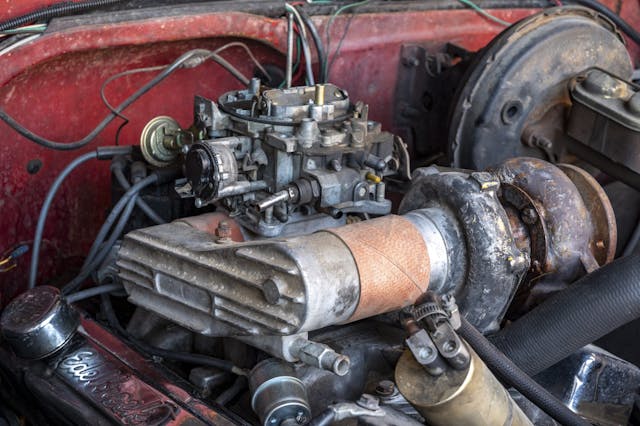









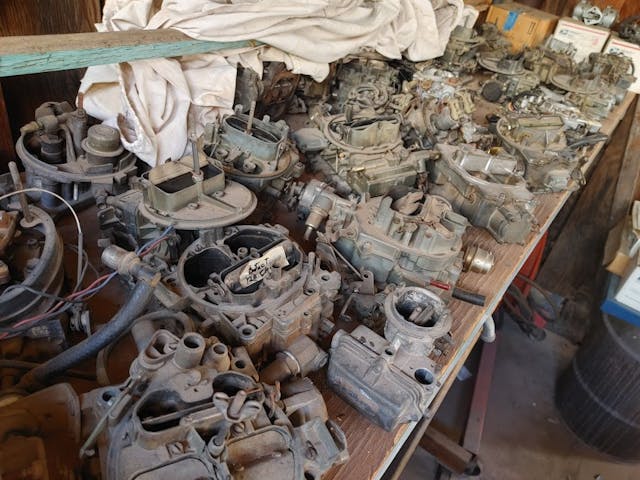

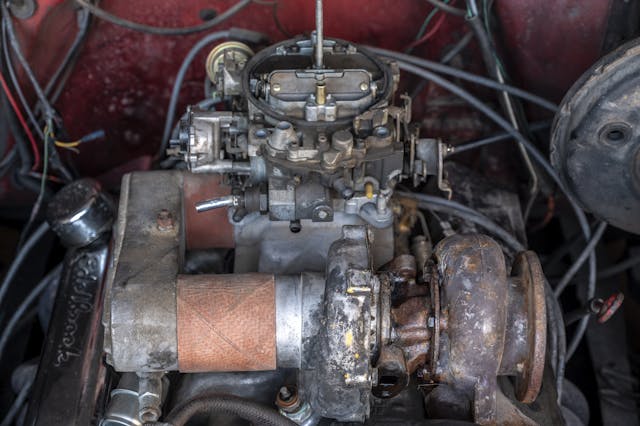
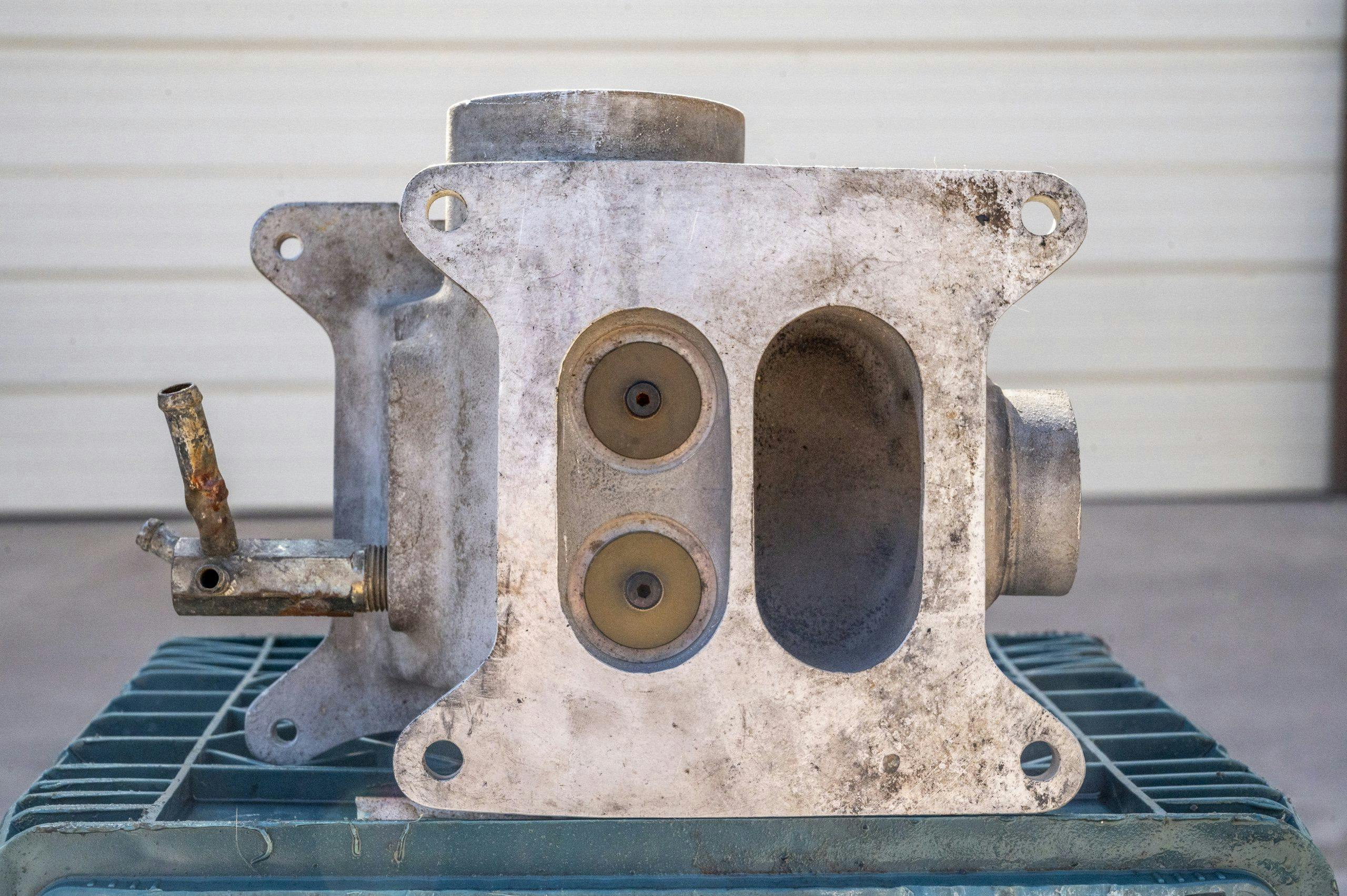
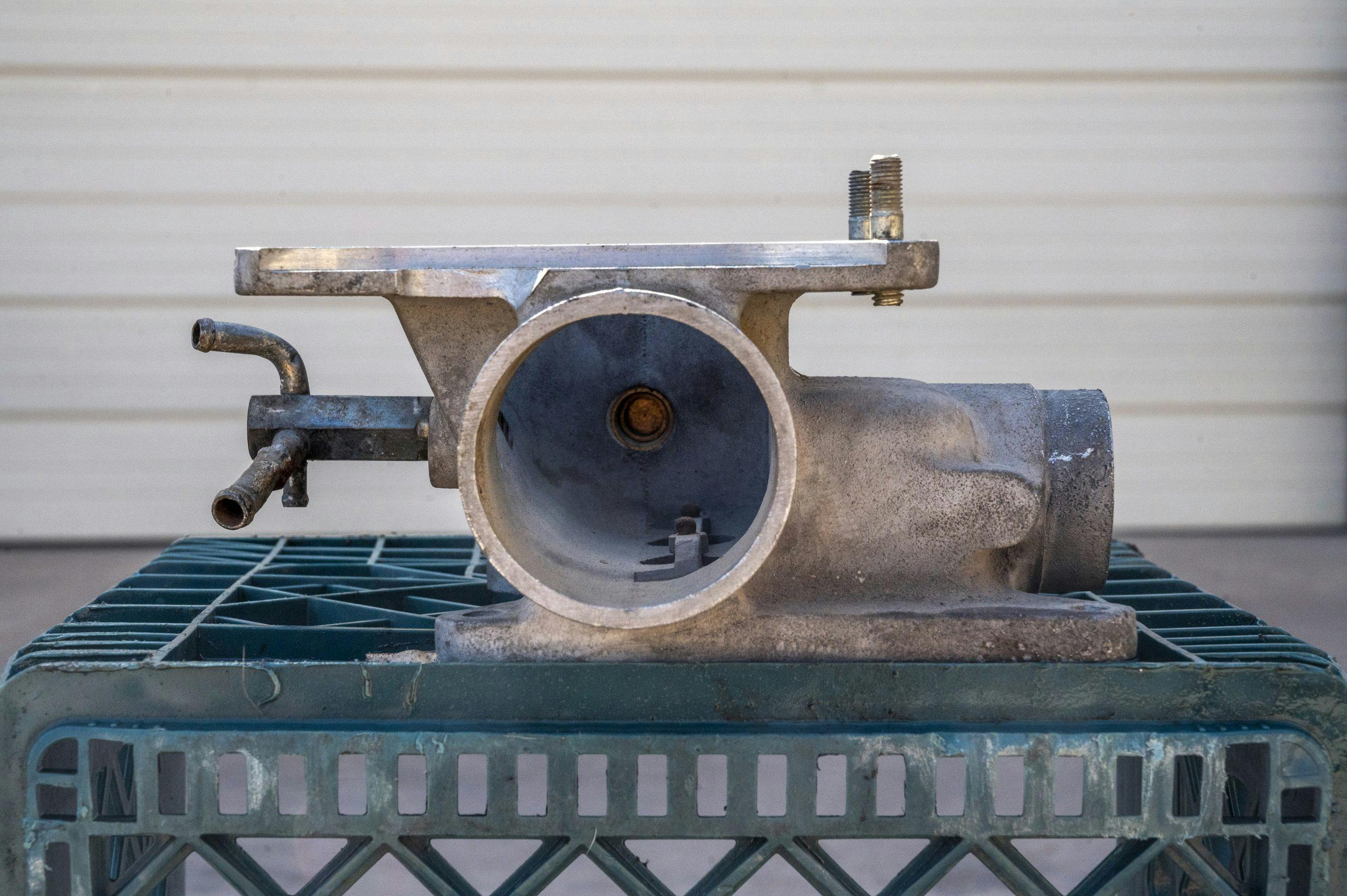
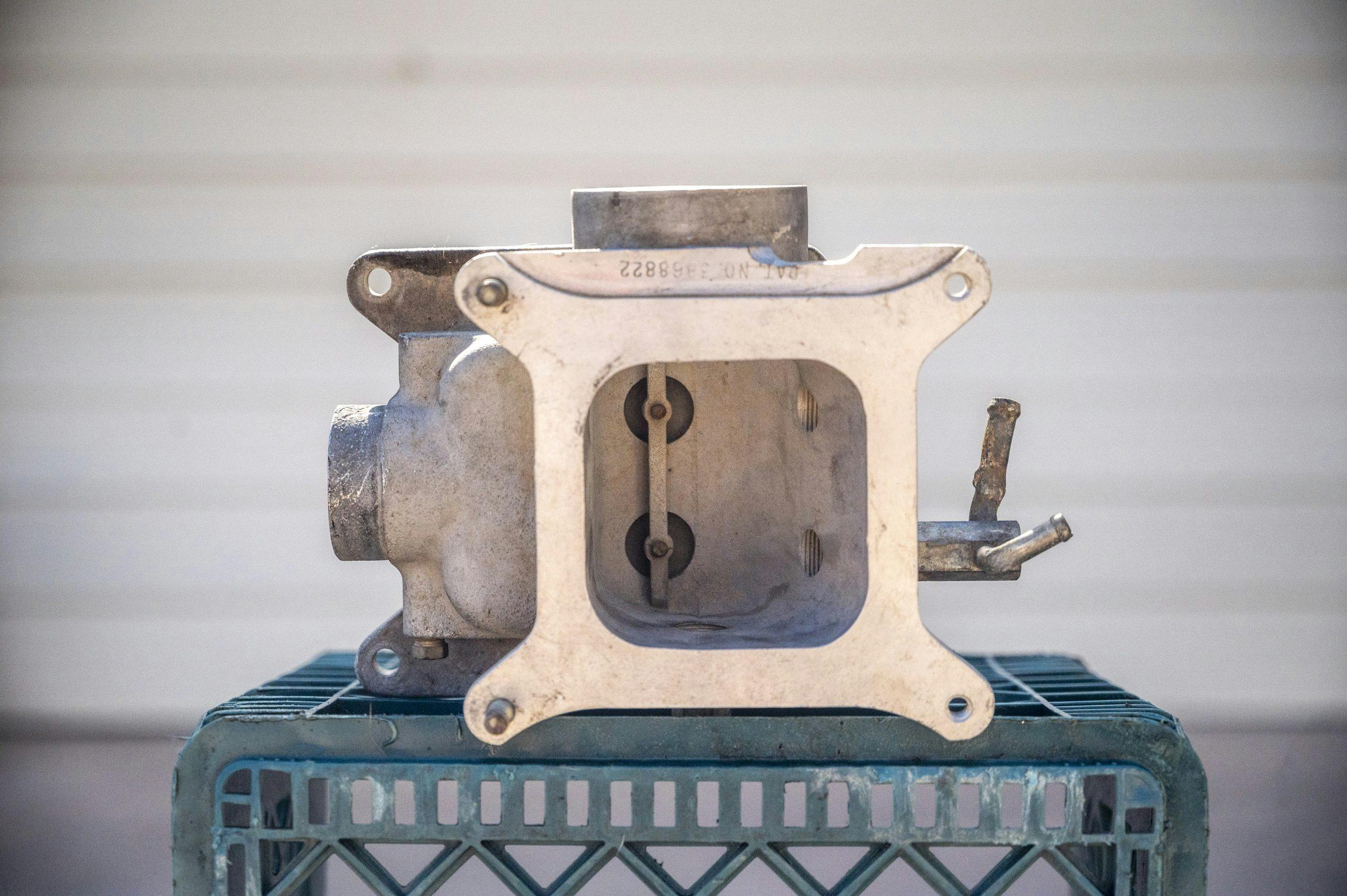

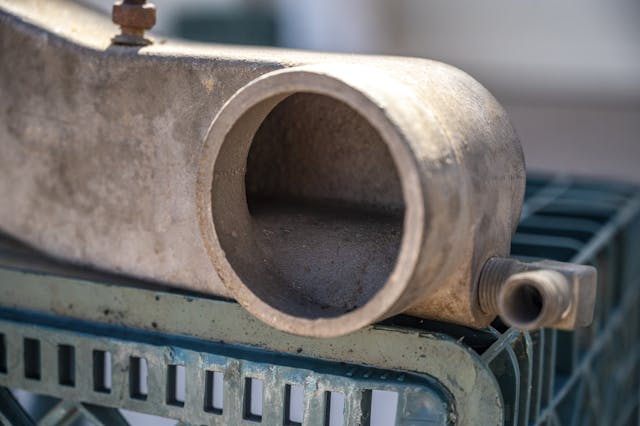
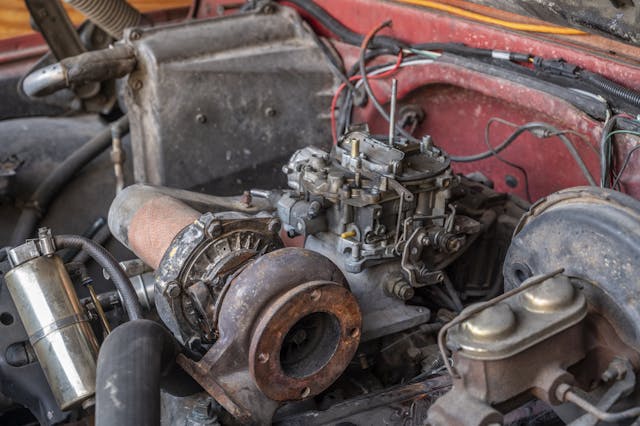














Hi, Phillip Thomas, I have a fully functional Turbosonics kit on my sbc engine in my 1960 Chevy C10 if you’d be interested in seeing some pics. I haven’t found another one in operation yet. Send me an email and I will tell you the details and send you some pics. Thx Todd
Yes , please let me see it, I am very interested
Please I would love to get this
I’d really like to see it aswell, I’ve had this kit for years and can’t get much info or set up pictures to start it on something
Hi Ray Rays Rod Shop. My 1973 Javelin had one of these kits installed back in the 70’S and the rear window still has the original decal that says ” Turbo charged by Accel ” and all I have left of it is the Turbo gauge that was with the kit. If for some reason you do not find a project for it, I would be interested in finding and purchasing one of these kits to put back on my car.
What is a new kit like this worth? I have what looks to be an original kit made by air research never used.
If this a original period correct accel kit, I may be interested in it if you are looking at parting with it. Give me a call at 780-667-6991
coming of age in the early 70’s the accel kits were certainly something i drooled and lusted over, however being a kid that was broke as a joke i had to live vicariously through magazine articles about the turbo kit.
i have been thinking and racking my old brain for the better part of a week trying to remember “accel” was the kit supplier, finally yesterday the old noggin hard drive finished sorting 50 years of oft times useless info and all of a sudden “ACCEL” popped into my head, and a quick search and i found your article.
now the search is on for an old kit to modify and fit a cadillac 472 sitting in my 55 chevy 2dr post
btw, i have had the car since dec ’74 so it seems most appropriate to now finally get around to doing the upgrade.
thanks for the writeup
Phillip Thomas – Hagerty. Are you still writing for Hagerty ? I worked with Bob Keller at Roto-master where we both worked for Hugh McInnes. I can add a lot to your info about Accel, Echlin. and Turbo-Sonic, AiResearch, Rajay, and RotoMaster. I retired from AiResearch/Garrett/AlliedSignal/Honeywell in 2002. If you in Phoenix Aridzona . . . give me a call . . . 480/860-8772. Got lots of PICTURES and Parts is Parts in my Home Shop.
Hope to hear from you soon. Louis Cruse